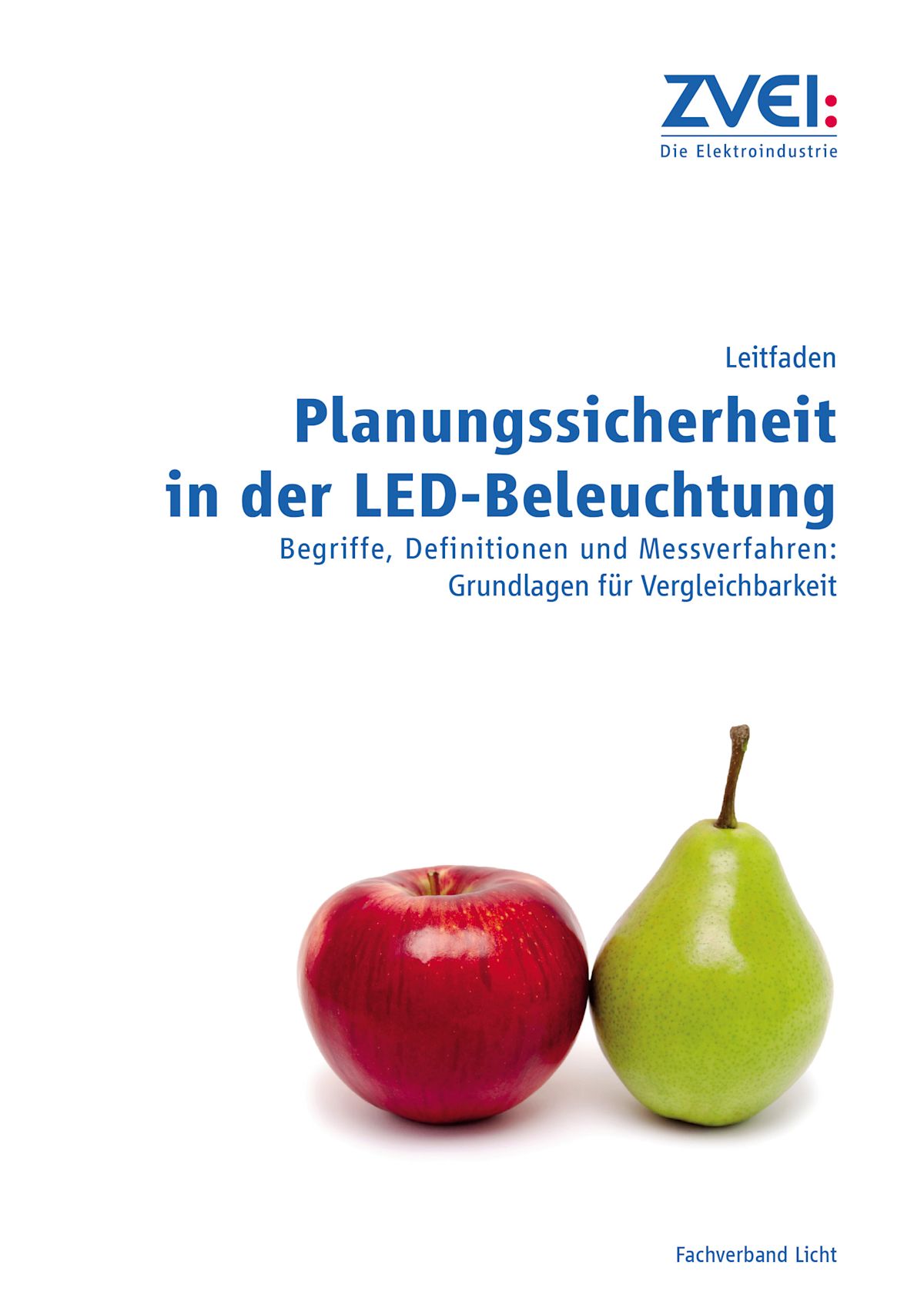Technical parameters of LED luminaires
The International Electrotechnical Commission (IEC) has drawn up standards for the method of operation of LED luminaires and LED modules. These standards define quality criteria and generally valid measurement requirements for their comparative assessment. In this regard, the Lighting Division of the German Electrical and Electronic Manufacturers’ Association (ZVEI) published its “Guide to Reliable Planning with LED Lighting.”
The terms and explanations used in our book are based on the second edition of this ZVEI publication. The most important parameters are described below. We sometimes use other terms where they improve understanding. The corresponding terms used in the “Guide to Reliable Planning with LED Lighting” are then placed in brackets.
Wytyczne ZVEI „Bezpieczeństwo projektowania w oświetleniu LED”.

Module luminous flux (nominal value) The luminous flux (φ) of an LED module measured in lumen (lm). This value indicates the luminous flux generated by an LED module at 25 °C ambient temperature.
Luminaire luminous flux (ZVEI rated luminous flux) The luminous flux (φ) of a luminaire measured in lumen (lm). This value defines the total luminous flux which is emitted by the luminaire.
Connected module wattage (nominal value) The connected wattage (P) of an LED module measured in watts (W). This value defines the power which is consumed by an LED module.
Luminaire connected wattage (ZVEI rated input power) The connected wattage (P) of a luminaire measured in watts (W). This value defines the total power which the luminaire consumes after thermal stabilisation. This output encompasses all integrated components, e. g. the LED module and operating device.
Luminaire luminous efficiency The luminaire luminous efficiency is the quotient of the emitted luminous flux and the electrical power consumed by the luminaire. The value is expressed in lumen per watt (lm/W).
Colour temperature The term “colour temperature” is used for the light colour of white light. It is expressed in Kelvin (K). The term warm white is used up to 3300 K, neutral white from 3300 K to 5300 K, and daylight white over 5300 K.
Colour rendering index The colour rendering index (CRI) stands for the degree of conformity between the perceived colour of an object and its appearance under a specific light source.
Ambient temperature (ZVEI rated ambient temperature) The ambient temperature (ta) defines the maximum temperature, measured in degrees Celsius (°C), at which a luminaire is allowed to be operated.
Voltage The maximum electric rated voltage, measured in volts (V), at which a luminaire is allowed to be operated.
Service life criteria Most LED do not fail by a certain time but their luminous flux decreases over time (degradation). The service life of LEDs, LED modules and luminaires is therefore limited only by the total failure of their associated electronic components (e. g. PSU), or by falling below predefined minimum luminous flux values.
Module designation BEGA LED modules are replaceable. A designation in every LED luminaire provides exact details of the installed LED modules. Furthermore, our in-house production will enable us to deliver matching LED modules for many years to come.
We guarantee the availability of replacement modules even 20 years after you purchase an LED luminaire from us.